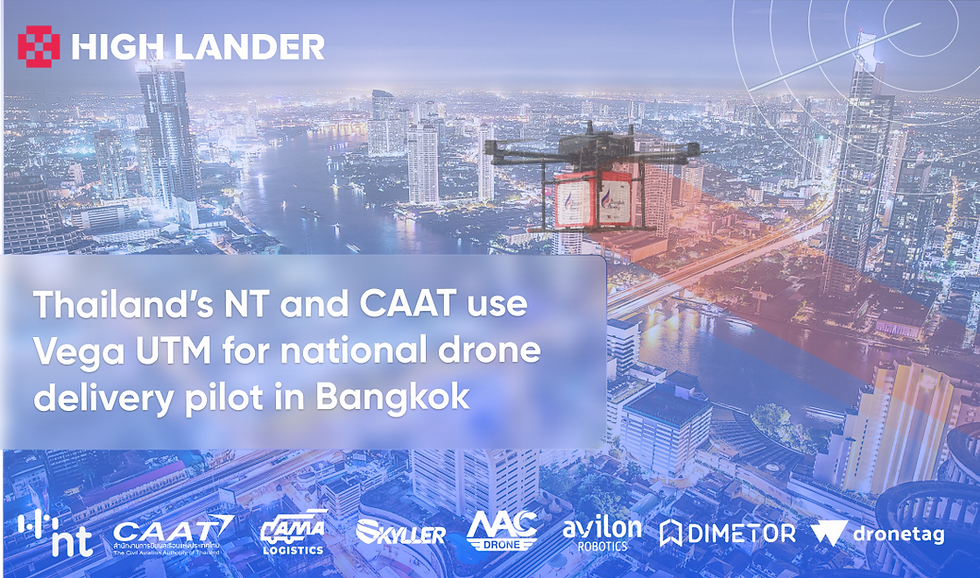Ingenuity: the first drone to fly on another planet
- Simon Golstein
- Feb 21, 2024
- 3 min read
Last month, the first drone to operate on another planet damaged one of its propellors, and will fly no more.

"Ingenuity" arrived on Mars in February 2021 and was originally intended to execute only five flights as a simple technology demonstration. Instead, the aircraft operated for more than three years and flew 72 times, racking up nine minutes of airtime and 17 kilometers travelled.
Thomas Zurbuchen, associate administrator of NASA’s Science Mission Directorate, said: “Less than a year ago we didn’t even know if powered, controlled flight of an aircraft at Mars was possible…Such a transformation of mindset in such a short period is simply amazing, and one of the most historic in the annals of air and space exploration.”
So what was so special about Ingenuity?
Day 43 of operation. Credit: Inara Prey, flickr
When the Mars 2020 project was announced, an aircraft wasn’t in the plan at all. The focus of the mission was to land and operate the Perseverance Rover, a one-ton uncrewed vehicle packed with scientific instruments. However, after project approval, NASA’s Jet Propulsion Laboratory spent six years and $80 million developing the aircraft.
Ingenuity carried two cameras but no scientific equipment, because its mission was simple. As MiMi Aung, Ingenuity project manager, put it: “We want to see if we can fly at Mars.”
There were many challenges to executing powered flight on Mars. The gravity is 38% lower, which is a positive, but Mars’ 95% carbon dioxide atmosphere provides only 0.6% of the air pressure that we have on Earth, so there’s very little to support an aircraft’s weight. The lack of atmosphere affects heat dissipation too, because there’s nothing to soak the heat up; Ingenuity’s engine would get hotter by 1°C for every second of operation. If that wasn’t challenging enough, Martian nights can get as cold as -900°C, so equipment needs to tough enough to withstand that too.
Ingenuity was built to overcome these challenges. The props were extra large and constructed of carbon fiber foam core, minimizing their weight – in fact the entire aircraft weighed in at less than two kilograms. The engine turned the propellors at up to 2,900 rpm, a much higher rate than helicopters on Earth which typically turn at around 500 rpm. Ingenuity also included heaters, which used some of the battery store to mitigate the cold during the night.
Ingenuity snaps Perseverance (top left) from an altitude of 12 meters. Credit: NASA/JPL-Caltech
Another issue was distance. Depending on planet positions, Mars is between 56 million and 401 million kilometers away from Earth, so radio signals take up to twenty minutes to arrive. Thus, Ingenuity had to fly autonomously. Commands were sent from Earth to Perseverance, which would relay them to the aircraft. Similarly, Ingenuity sent its data to the rover for transmission back to Earth, including real-time flight data. Ingenuity and Perseverance could communicate at a distance of up to one kilometer, which caused issues on three occasions when the aircraft landed out of line of sight of the rover. On one occasion, contact was lost for six days until Perseverance drove close enough to re-establish a connection.
The helicopter was able to avoid hazardous terrain and correct its own navigation thanks to a software update made after its 33rd flight. However, after flight number 72 in January 2024, the propellors were damaged following a hard landing, most likely caused by a navigation error due to the relatively featureless landscape where it landed. Obviously, repair was not possible, so the mission was concluded.
Over its three years of operation, Ingenuity helped Perseverance scout areas to explore, and pushed the envelope of what we knew was possible in aviation. It seems very appropriate that the aircraft carried a small piece of fabric from a wing of the Wright brothers’ 1903 Flyer, the first successful aircraft in history.
“Ingenuity is an exemplar of the way we push the boundaries of what’s possible every day,” said Laurie Leshin, director of NASA’s Jet Propulsion Laboratory.
Perseverance takes a selfie with Ingenuity. Credit: NASA/JPL-Caltech/MSSS
The success of the Ingenuity mission is reflected every day back on our home planet, where we’re constantly finding new uses and capabilities of drone technology. However, in order to get the most out of your drones, you need to operate them through drone fleet management software. High Lander’s Orion DFM can’t take you to space just yet, but it supercharges drones with a wide range of capabilities, including autonomous flight, precision landing and GPS loss protection for BVLOS flights.
For a free demo of Orion DFM and its capabilities, get in touch.






Comments